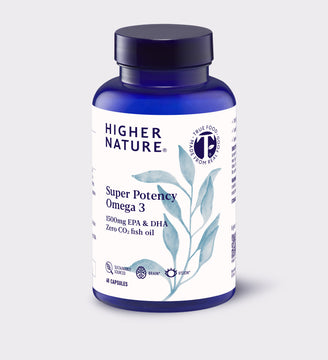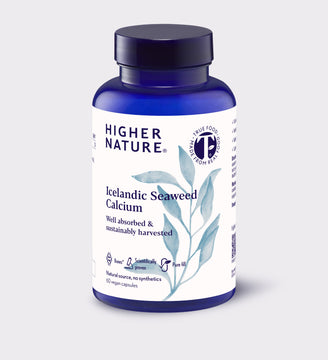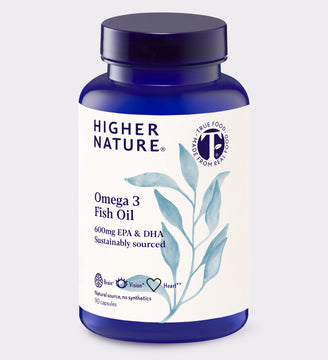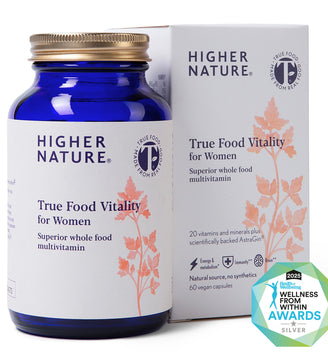
Seasonal eating
Elizabeth Houston - Higher Nature Nutritional Therapist - Dip BCNH mbant mCNHC
Eating seasonally is when you choose fruits and vegetables that are naturally in abundance at a particular time of year. Consumer demand and the supermarkets desire to provide an endless supply mean many of us have forgotten that fruit and vegetables have seasons.
Remember when you could only get strawberries in summer? Satsumas in time for Christmas? Remember how good they were? Let’s face it strawberries in February are tasteless. That’s because the strawberries you buy out of season are grown overseas leaving a huge carbon footprint, loosing flavour and vitamins on the way.
Here are my 7 reasons to start eating seasonally
- You’ll get food at its best; seasonal fruit and veg are picked at their ripe peak, not harvested early so they can be transported.
- Avoid paying a premium
- It’s better for the environment. The impact of shipping food from the other side of the world is massive. Eating seasonally and you’ll be supporting British farmers and reducing your carbon footprint.
- It’s healthier. Food loses essential nutrients, especially water soluble vitamins such as vitamin C and B vitamins, while in transport and storage.
- Avoid unnecessary chemicals. Treatments known as ripening agents are often used to speed up the ripening process after harvesting. These are often chemicals sprayed on to the produce. Other treatments may be applied to help keep the food fresh during its long journey.
- It will taste so much better- trust me!
- You’ll eat a variety of different nutrients. It’s easy to get stuck in a routine of eating the same thing over and over, whilst eating seasonally will encourage you to try new things.
There is a growing trend to get back to a simpler way of eating locally when possible and with less packaging – let’s enjoy food the way nature intended. You could even try growing your own! If you haven’t a garden space, try growing plants in pots or check out if you can get your hands on an allotment locally.
January- February
Apples, Kale, Beetroot, Leeks, Cabbage Mushrooms Carrots, Onions, Parsnips, Pears, Spring Greens, Spring Onions, Squash, Swedes. Jerusalem Artichokes.
March- April
Asparagus, Artichoke, Beetroot, Cabbage, Carrots, Chicory, Cucumber, Leeks, Parsnip, Purple Sprouting Broccoli, Radishes, Rhubarb, Spring Greens, Spring Onions, Watercress, New Potatoes, Rocket, Spinach.
May- June
Artichoke, Asparagus, Aubergine, Beetroot, Blackcurrants, Broccoli, Broad Beans, Cauliflower, Cherries, Chicory, Chillies, Courgettes, Cucumber Elderflowers, Lettuce, Marrow, New Potatoes, Peas, Peppers, Radishes, Raspberries Rhubarb, Runner Beans Rocket, Spinach, Spring Greens, Spring Onions, Strawberries, Summer Squash, Swiss Chard, Turnips, Watercress.
July- August
Aubergine, Beetroot, Blackberries, Blackcurrants, Blueberries, Broad Beans, Broccoli, Carrots, Cauliflower, Cherries, Chicory, Chillies, Courgettes, Cucumber, Damsons, Gooseberries, Fennel, French Beans, Garlic, Kohlrabi, Leeks, Lettuce, Loganberries, Mangetout, Marrow, Mushrooms New Potatoes, Onions, Parsnips, Peas, Peppers, Potatoes, Plums, Radishes, Raspberries, Redcurrants, Rhubarb, Rocket, Runner Beans, Samphire, Sorrel, Spring Greens, Spring Onions, Strawberries, Summer Squash, Sweetcorn Swish Chard, Tomatoes, Turnips, Watercress.
September- October
Aubergine, Apples, Beetroot, Blackberries, Broccoli, Butternut Squash, Carrots, Cauliflower, Celery, Chestnuts, Courgettes, Chicory, Chillies, Courgette Cucumber, Elderberries, Damsons, Garlic, Kale, Kohlrabi, Leeks, Lettuce, Mangetout, Marrow, Onions, Parsnips, Pears, Peas, Peppers, Plums, Potatoes, Pumpkin, Radishes, Raspberries, Rhubarb, Rocket, Runner Beans, Spinach, Spring Greens, Spring Onions, Strawberries, Summer Squash, Sweetcorn, Swiss Chard, Tomatoes, Turnips, Watercress, Wild Mushrooms, Winter Squash.
November- December
Apples, Beetroot, Brussels Sprouts, Butternut Squash, Cabbage, Carrots, Cauliflower, Celeriac, Celery, Chestnuts, Chicory, Cranberries, Elderberries, Jerusalem Artichokes, Kale, Leeks, Onions, Parsnips, Pears, Potatoes, Pumpkin, Swede, Swiss Chard, Turnips, Watercress, Wild Mushrooms, Winter Squash.
Recipes
Spring
Simple asparagus and watercress brunch. (Serves 2)
4 eggs
10 trimmed asparagus spears
2 handfuls of watercress
A sprinkle of pumpkin seeds
Method
Bring a pan of water to the boil and poach the eggs. Remove the eggs with a slotted spoon
Meanwhile pop the asparagus spears into boiling water and cook for 3 mins.
Place a handful of watercress onto each plate and stack the asparagus and eggs on top.
Add salt and pepper and a sprinkle of pumpkin seeds.
Summer
Healthy berry crumble
Who doesn’t like a comforting crumble? my version is much lower is sugar than regular crumble so you can enjoy without the guilt.
You will need:
Mixed berries I find frozen berries work best I use blueberries, raspberries and blackberries
Honey
1 or 2 apples
Ground cinnamon (optional)
For the topping:
2/3 pack Cold butter
2 cups ground almonds
1 1/2 cups Coconut flour or whole oats or a mixture of the three
2 tablespoons of xylitol
Vary the amount of topping in accordance to the amount of fruit, you want to totally cover the fruit with about 2 centimetres of topping.
Method
Fill a suitable oven dish with the berries and the apples cut into slices
Drizzle over about 2-3 teaspoons of honey and sprinkle over cinnamon if desired. Set aside while you make the crumble.
Put the dry ingredients (almonds, oats and coconut flour) into a large mixing bowl. Make sure the butter is straight from the fridge, cut the butter into cubes and using your hands ‘massage’ a cube at a time into the dry mix until it starts to resemble bread crumbs. Add in the coconut sugar and scatter the mixture over the berries, make sure you don’t leave any gaps. Bake in the oven for approx. 40minutes.
Autumn
Pumpkin soup
A fantastic winter warmer! And so easy to make.
You will need:
2lb/1 kg pumpkin (any), chopped into large chunks (remove skin and seeds)
2 medium onions, sliced
2 cloves of garlic
750ml vegetable stock (I use Marigold Swiss Vegetable Bouillon Powder)
250ml oat milk
Salt and pepper
Method
Combine all ingredients (except salt and pepper) in a saucepan and bring to boil, then reduce heat and let simmer until pumpkin is tender.
Remove from heat and blend until smooth.
Season to taste with salt and pepper and a few roasted seeds if you have them.
Winter
Winter cabbage with chestnuts. This makes a great side dish.
You will need
1 pound of fresh chestnuts in shells
2 tablespoons vegetable or olive oil
1 large onion, thinly sliced
1/2 a cabbage of choice red savoy or white all work well, cored, thinly sliced
1/2 cup red wine vinegar
6 tablespoons water
3 tablespoons sugar or xylitol.
Preheat oven to 200ºC. Using a small knife, cut a slit into each chestnut. Roast for about 35 minutes letting them cool down before peeling.
Heat oil in a large pot over a medium heat. Add the onion; lightly fry until soft for about 5 minutes. Add the cabbage, vinegar, water and sugar.
Cover. Cook until cabbage is tender, stirring occasionally, about 40 minutes. Add the chestnuts and warm through. Season with salt and pepper.


















